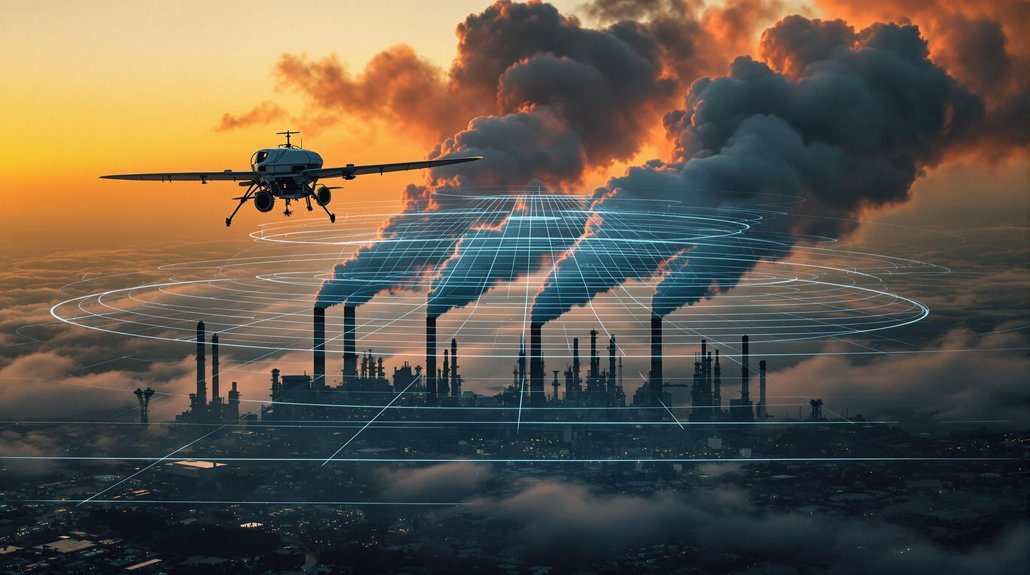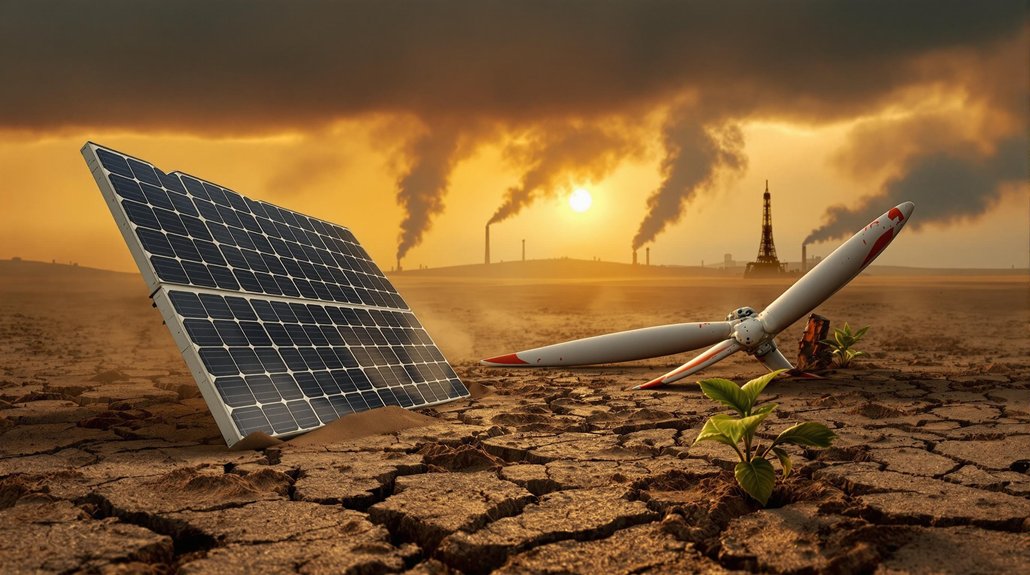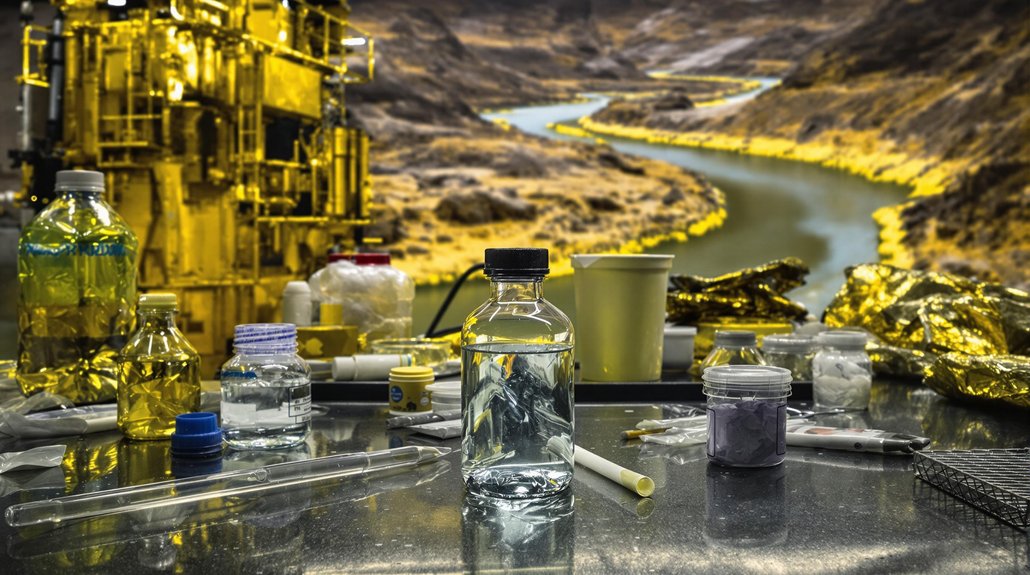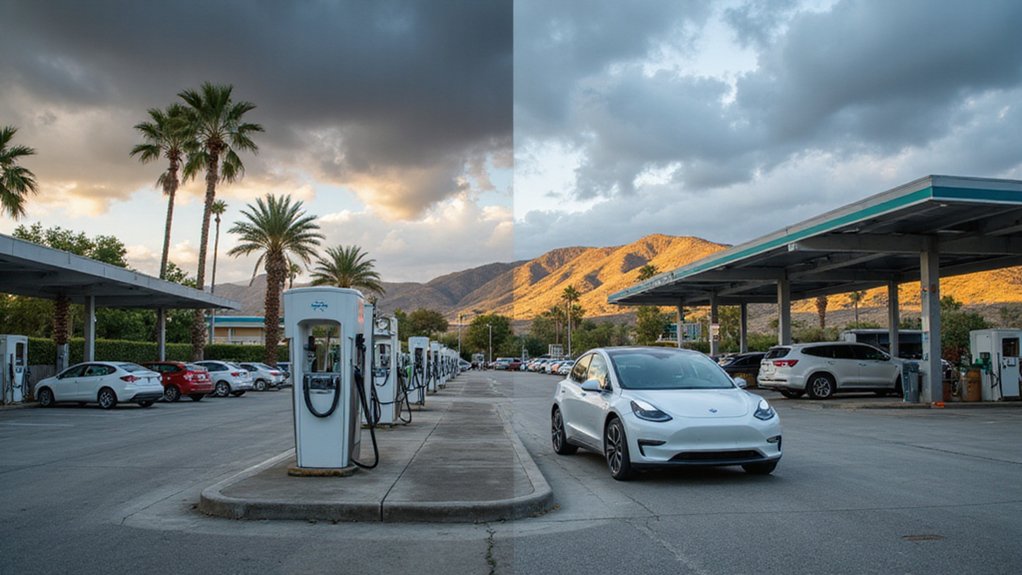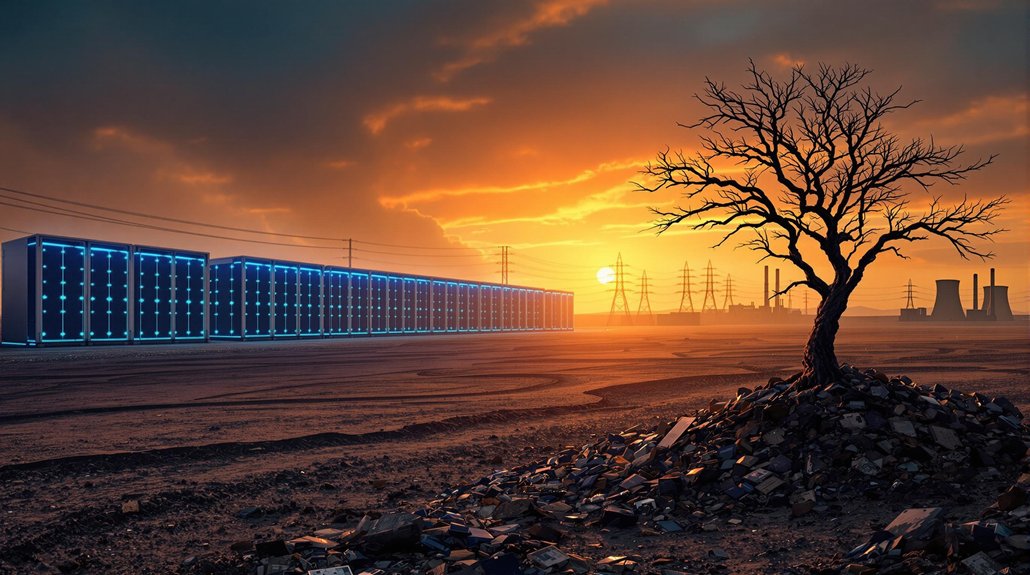Recent satellite data exposes a shocking reality: oil and gas companies emit 70% more pollution than they admit. Methane emissions? Triple what government figures show. The industry has known about climate impacts since 1959 but chose profits over planet. Only 9% report their massive Scope 3 emissions, which inflate carbon footprints by 24%. No surprise there. The truth behind those glossy sustainability reports paints a much dirtier picture.
A façade of corporate responsibility crumbles as new satellite data exposes the oil industry’s massive emissions deception. Advanced monitoring technologies have revealed that actual oil and gas emissions are a whopping 70% higher than what companies officially report. Methane? Even worse. Three times higher than U.S. government figures suggest. Not exactly a rounding error.
The oil industry’s climate façade collapses under satellite scrutiny, revealing emissions 70% higher than reported—with methane tripling official estimates.
The industry has known about climate impacts for over 70 years. Back in 1959, Shell acknowledged in writing that fossil fuels could “change the climate.” By the late 1960s, their own scientists had confirmed human-caused climate change. Did they sound the alarm? Nope. They buried it and spent decades spreading doubt instead. The Global Climate Coalition, formed by oil companies, deliberately spread disinformation about climate science to protect their business interests.
Let’s talk Scope 3 emissions—the pollution from investments that nobody wants to mention. Only 9% of oil companies bother reporting these. Add these “forgotten” emissions into portfolios and carbon footprints jump by 24%. Convenient oversight, right?
The scale is staggering. Hundreds of “super-emitter events” happen yearly while companies look the other way. About 3% of U.S. methane production leaks into the atmosphere, triple what’s reported. Qatar’s actual emissions? Probably double what they claimed in their last report—from 2011. Seriously.
National reporting isn’t any better. Many countries are years behind on required emissions reports. The Philippines hasn’t bothered since 2014. High per-capita emitters like Qatar severely underreport. Measurement errors are everywhere. Aircraft measurements consistently show that oil sands emissions are significantly lower than what actually exists in the atmosphere.
When confronted, the industry pivots to vague solutions. They love talking about innovation and market-based approaches. Anything but actually cutting emissions. They’ll acknowledge climate change exists now (progress!), but responsibility? That’s someone else’s problem.
The path forward requires transparency. Satellite technology is finally enabling accurate monitoring that can’t be fudged with creative accounting. Without honest numbers, climate policy is just guesswork.
And judging by the real data emerging, we’ve been guessing way too low for way too long. With methane being 25 times more potent than CO2 as a greenhouse gas, these underreported emissions have far greater climate impacts than the public realizes.
